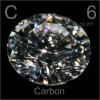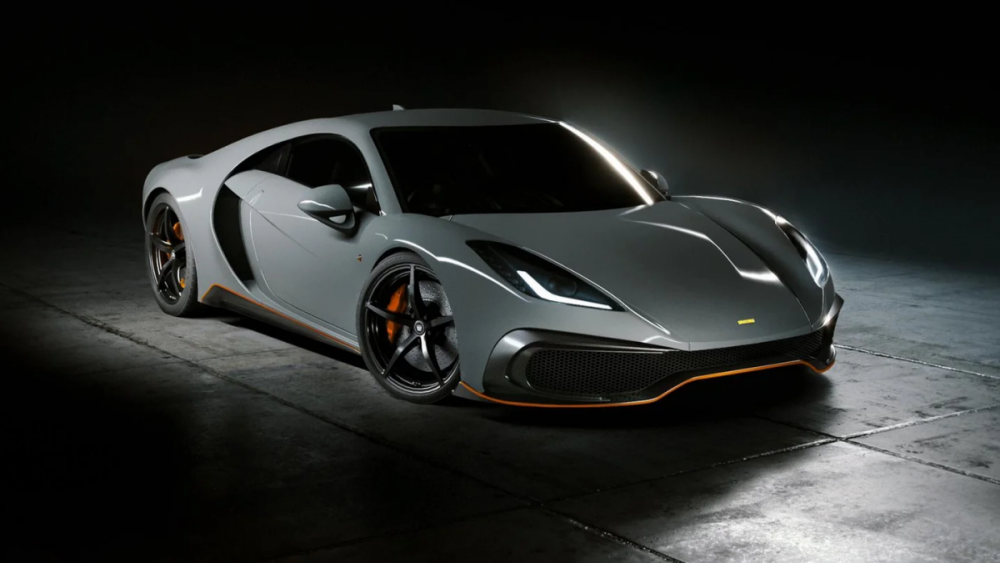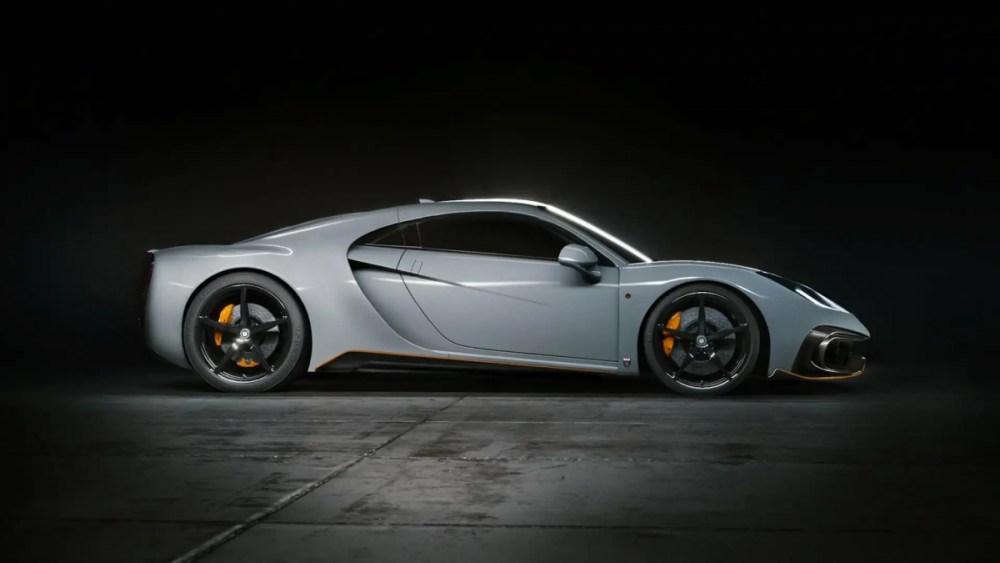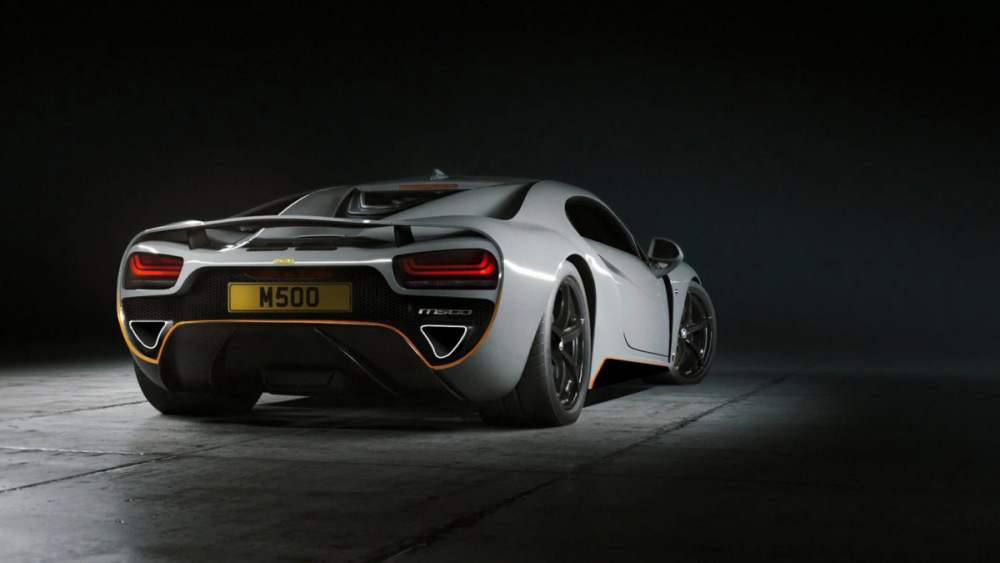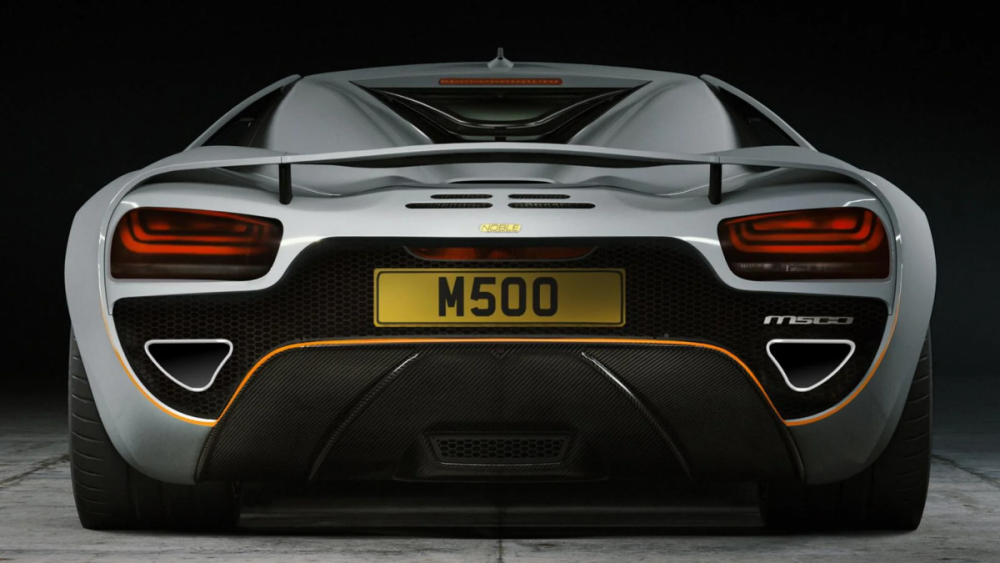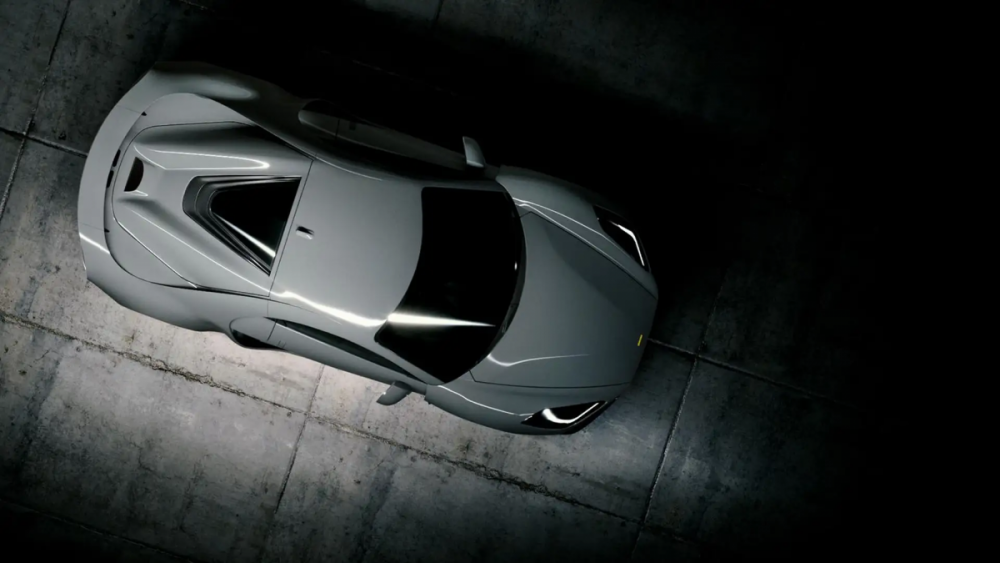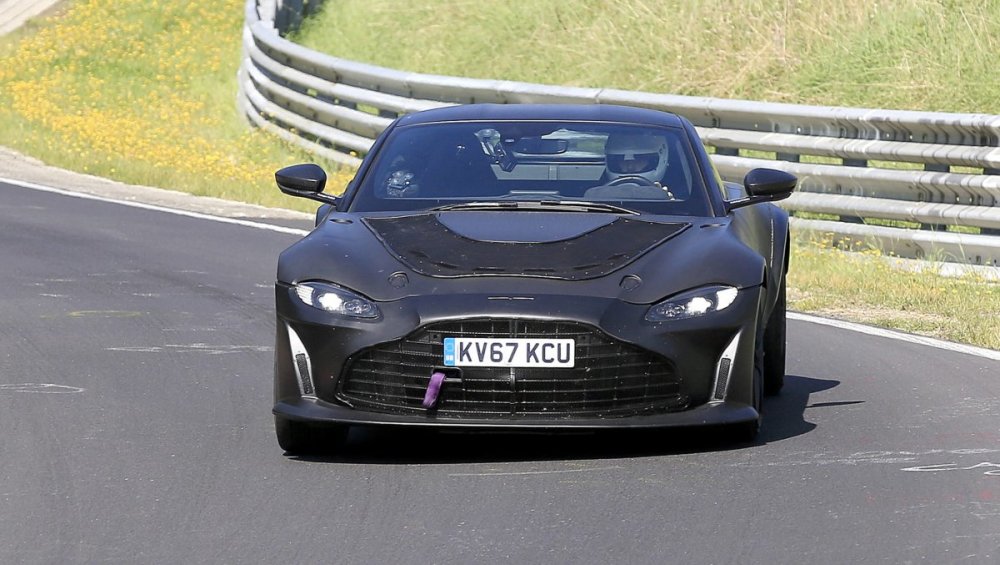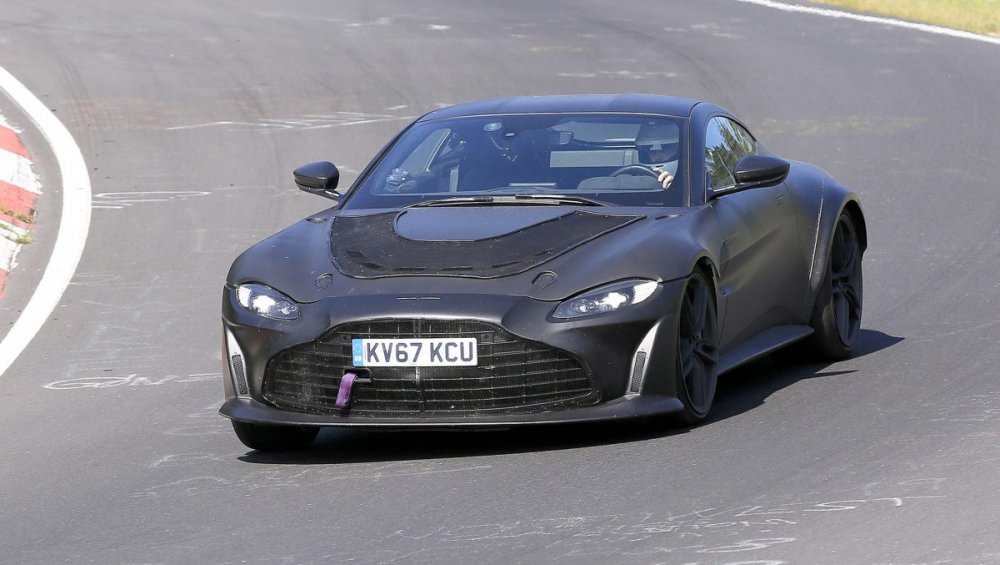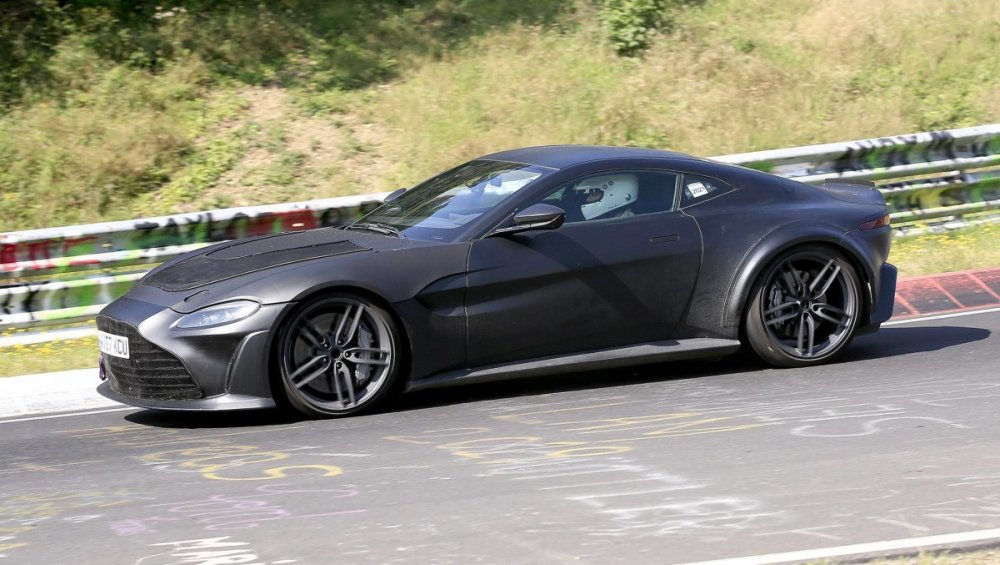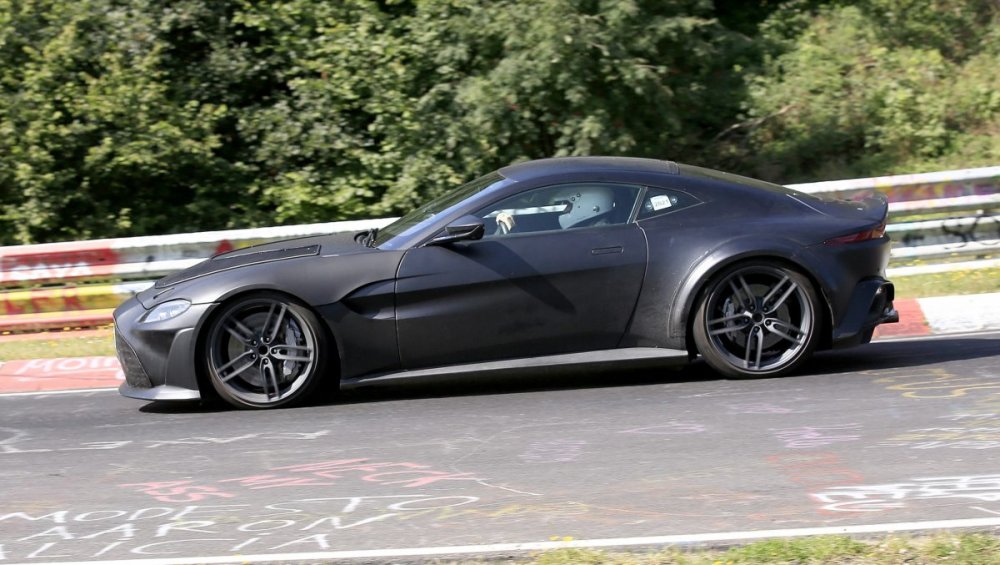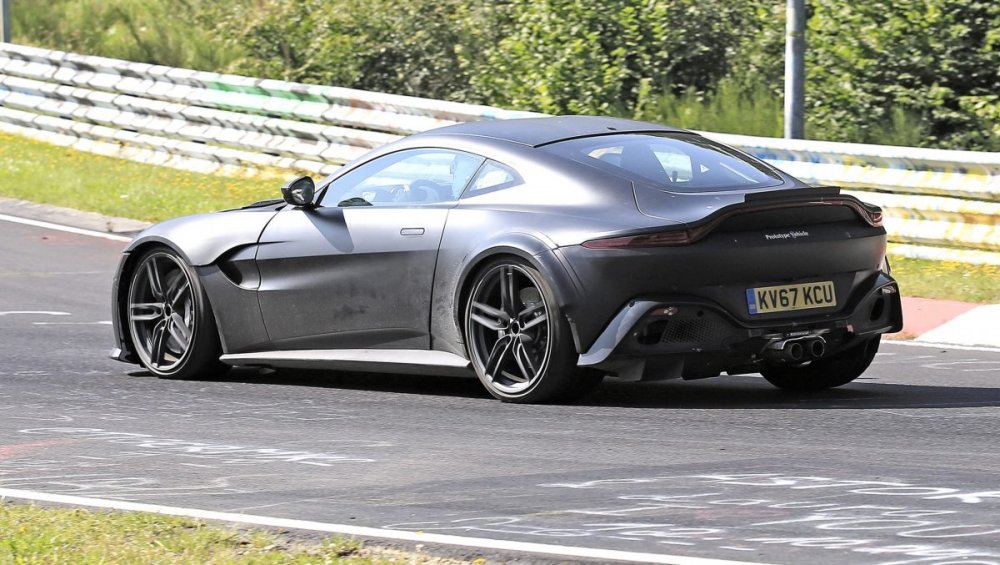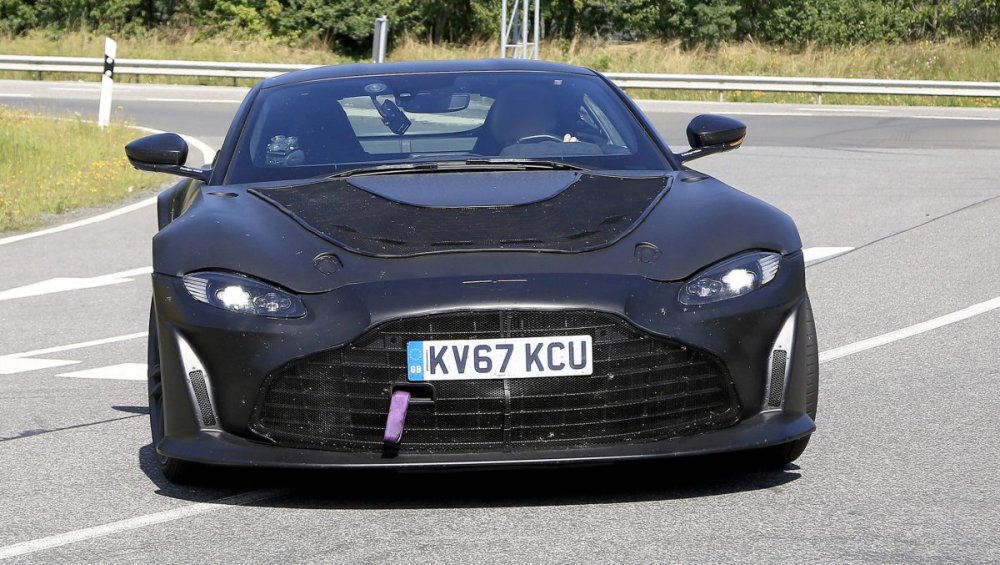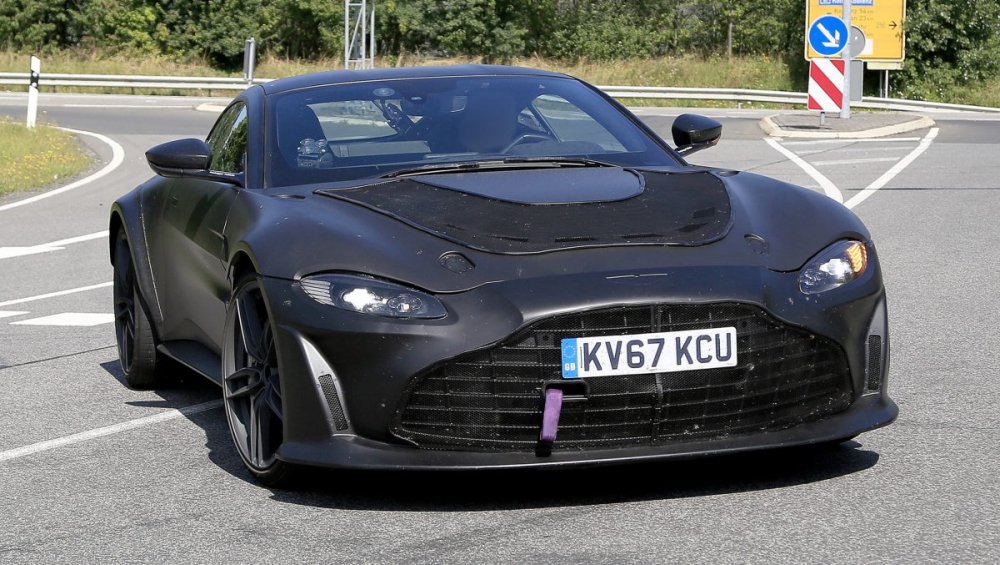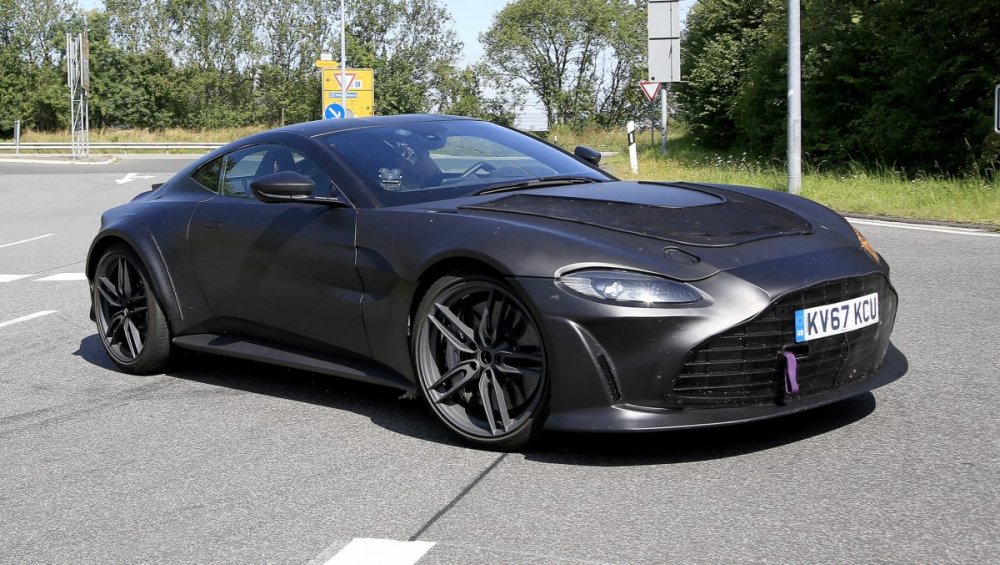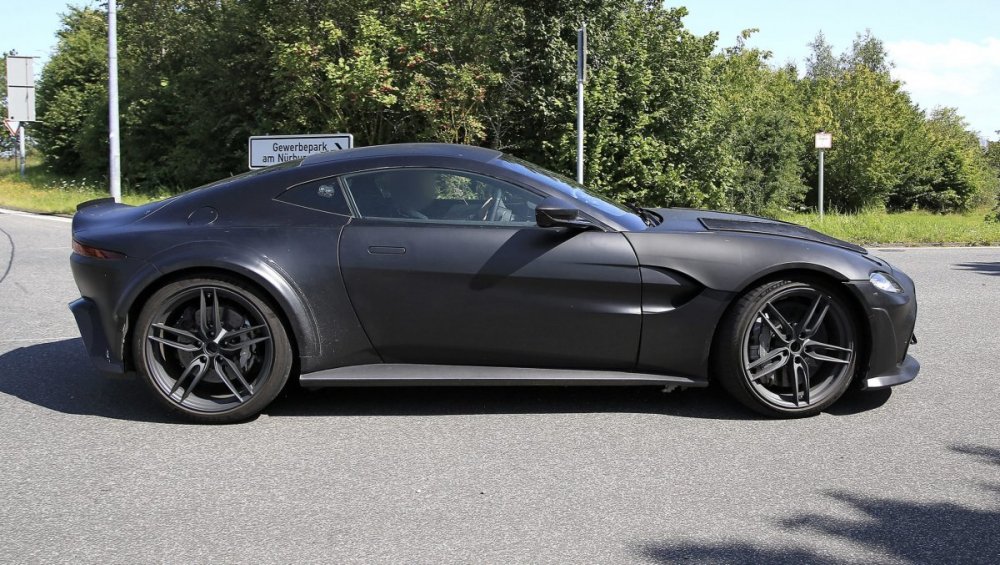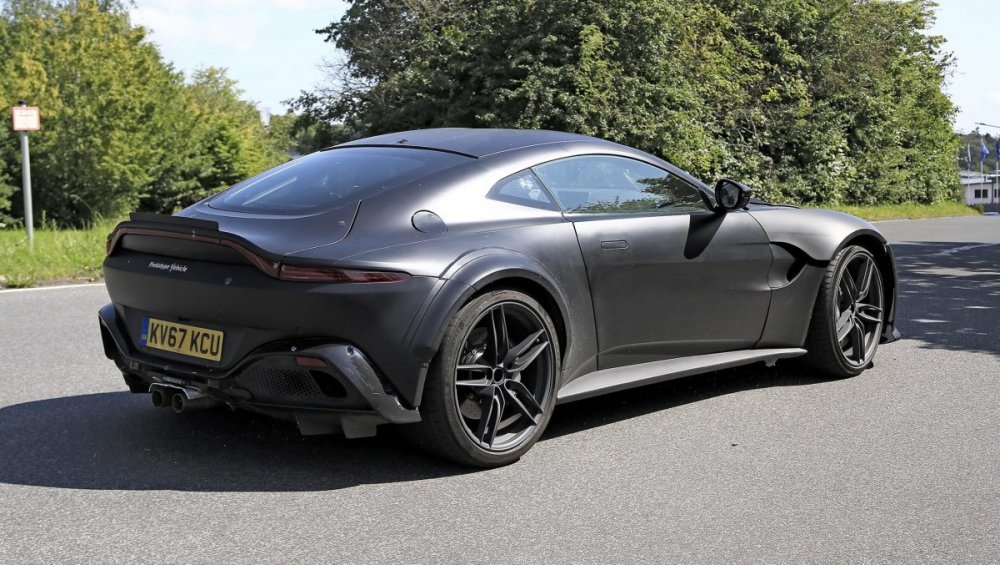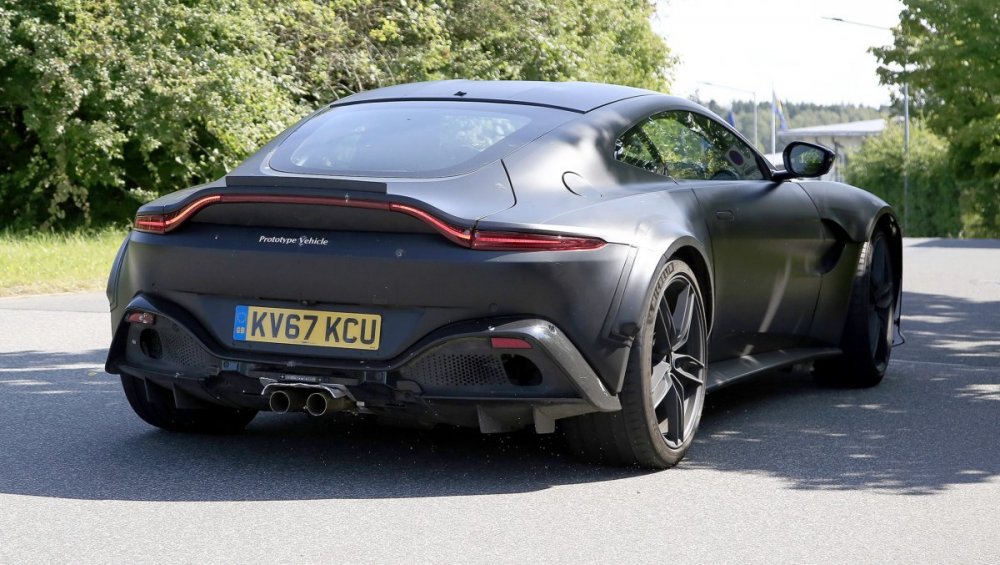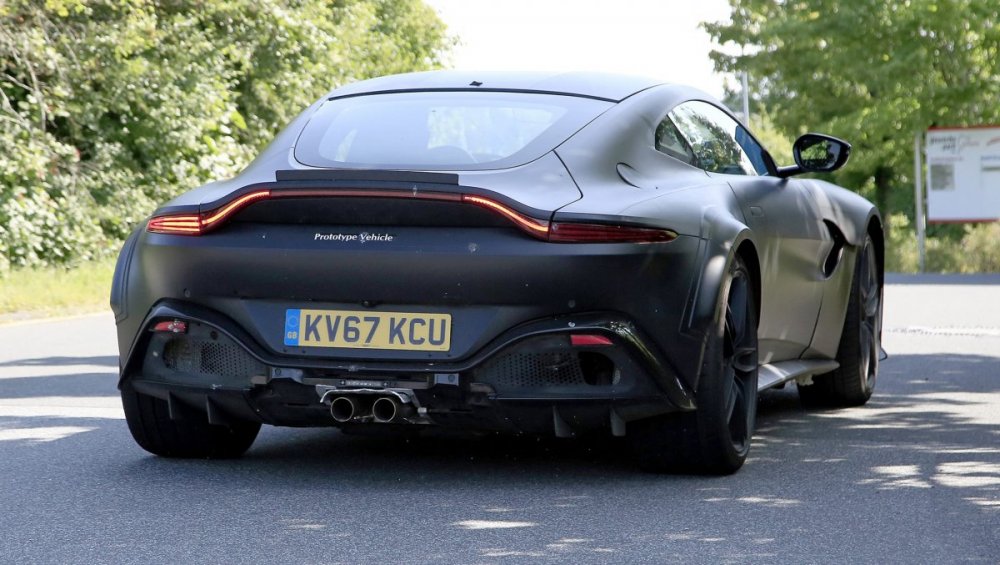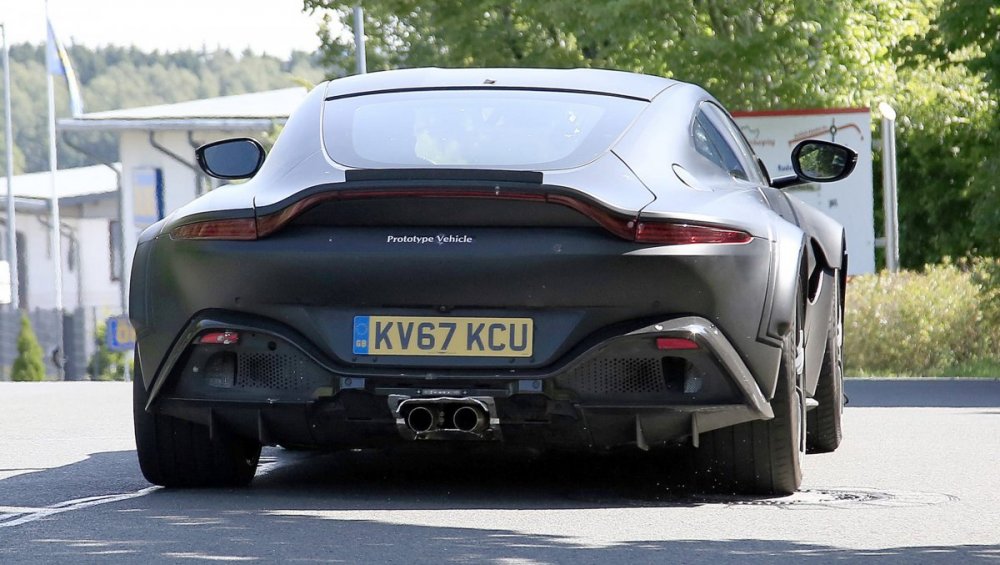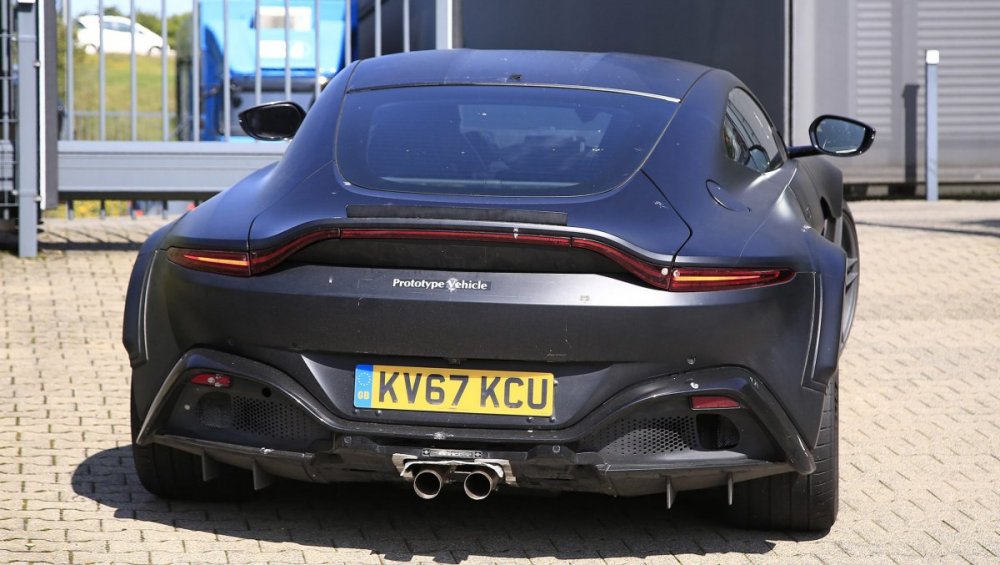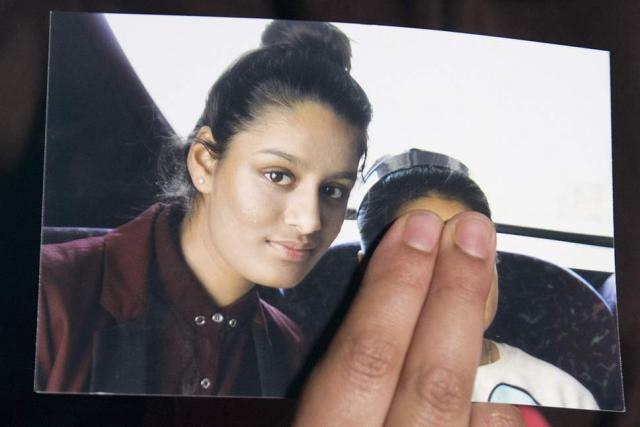Search the Community
Showing results for tags 'British'.
-
I have mixed feeling when reading some of the recent news about this once a luxurious brand. People of my era would probably remember that in the 70s to 80s, where Audi and BMW have yet to establish a strong footing in the premium segment and Lexus was still in the womb of Toyota, Jaguar stand shoulder to shoulder with Mercedes, if not taller. However, things took a downturn with more competition (from Audi, BMW, Volvo and Lexus) and the mismanagement of the marque by its parent company (and the UK government), which results in the sales of Jaguar to Ford in 1990 and subsequently to Tata in 2008. The merger with Land Rover to form JLR group in 2013 sounds like a brilliant plan to revive the brand, but not in the actual. Fast forward to 2024, with the push by EU to phase out gasoline model by 2040, it added more uncertainty to most automotive manufacturers. Jaguar too has to decide which path to take since it has finite funding, and they have place their bet on EVs about 2 years back, with the sudden halt in the development of a new XJ (which has already been spotted in production ready outfits). That is not the only changes, as Jaguar also plan to go upmarket to take on Bentley, Aston Martin and such, which is a VERY bold move. Will they succeed or gone down in history? I wish them all the best! Jaguar To Kill All Gas Cars In 2024 To Embrace EVs Jaguar is taking a different approach in its plan of producing nothing but battery-electric vehicles. Whereas most other brands are slowly making the transition over the coming years if not decade, Jaguar has confirmed it will cease production of its gas-powered models before introducing a new lineup comprised exclusively of BEVs. Jaguar has stopped building the XE, XF and F-Type; I-Pace and E-Pace to stop in Dec Jaguar has confirmed production on five model lines will end in 2024, leaving the F-Pace as the last car it’ll build before it begins its electric era from 2025. A company spokesperson confirmed production of the XE, XF and F-Type sportscar had already finished, while the E-Pace small SUV and game-changing I-Pace EV – both built in Austria – will be stopped in December 2024. Jaguar, a British Car Brand, Has Stopped Selling New Cars in the UK Announced nearly four years ago, Jaguar Land Rover’s “Reimagine” global strategy had one hugely important bullet point: “Reimagination of Jaguar as an all‑electric luxury brand from 2025 to realize its unique potential.” 2025 is right around the corner, and while new EVs have not been unveiled yet, the end is nigh for cars with combustion engines. In fact, Jaguar has stopped selling new vehicles with conventional powertrains in its home market. That’s right—you can’t buy a brand-new Jaguar in the UK anymore. The E-Pace, XE, XF, and F-Type had already been axed, and now the F-Pace has also bowed out. Autocar received a statement from JLR: "From November 2024, new Jaguar sales will come to an end ahead. We have now ceased allocation of our current generation of Jaguar vehicles.” Owned by Tata Motors since 2008, Jaguar will be pushed upmarket. It won’t rival the likes of BMW, Mercedes-Benz, and Audi anymore. Instead, it’ll go up against the likes of Bentley and Aston Martin. The first EV after the brand’s reinvention is expected to be a Porsche Taycan competitor, with a Bentayga-fighting SUV to land in 2026. Both will be underpinned by the dedicated Jaguar Electrified Architecture, which will also serve as the foundation for a big sedan due later this decade.
- 98 replies
-
- 10
-

-
.png)
-
<Noble M500 Supercar Packs EcoBoost V6 With a Gated Manual and No Airbags Don't count on anti-lock brakes to save you, either. Boutique British automaker Noble has reappeared with a fresh look at its long-coming supercar, the M500. Marketed as a slightly more tame version of its M600, the mid-engine sports coupe was first announced at Goodwood in 2018. When the hype faded, the world kind of forgot about the M500...until now. Recently, Noble broke its silence during a sitdown with Autocar. Noble’s Managing Director Peter Boutwood revealed how far the company has come in finalizing the M500, and how close the brand is in bringing the low-volume exotic to market. VIA NOBLE Just like its more powerful (and expensive) M600 brethren, the M500 is a two-seater, mid-engine sports coupe built to satisfy the person in the driver's seat—which is a Recaro Podium, by the way. The heart of the car is its 3.5-liter, twin-turbocharged V6 sourced from Ford; a definite departure from the M600's Volvo-bred V8. Presently, the Blue Oval's EcoBoost motor has been tweaked to produce 506 horsepower and 594 pound-feet of torque. Noble plans to up that figure to 550 hp at launch. Another change—arguably, for the better—is the lack of the originally promised dual-clutch automatic transmission in the M500. Instead, it will come with a proper gated six-speed manual transmission sourced from Graziano. No automatic option will be offered, period. Autocar warns that this means it likely won't have the straight-line acceleration figures of a supercar competitor with an automatic transmission, so don't bet on this against a McLaren 570S. Even still, it ought to be plenty fun to drive. Just about everything on the M500 is as mechanical as it can get. Each corner is supported by a double-wishbone suspension and coilover springs paired with passive dampers. Power steering is hydraulic to keep the driver connected to the road, and it doesn't even have anti-lock brakes or airbags. Noble elaborates that this M500 is a "working prototype" and as such, some things are still set to change. The rear wing might get a bit more angle once it completes high-speed testing, and it may fluctuate in poundage like a wrestler trying to make weight. The M500 prototype presently tips the scale at around 3,086 pounds (1,400kg), but its production-ready version could reportedly shave off another 330 pounds. Noble says it will also offer the M500 with some carbon fiber upgrades, meaning that the weight could dip down even further. VIA NOBLE Noble says that despite not having an MSRP set in stone, the first customer orders—and subsequently, deliveries—will begin later this year. Boutwood says that the company is aiming for a price of around $205,000 (150,000 British Pounds, or around $70,000 less than the Noble M600), which it hopes puts the car in the realm of purchase for Porsche owners. With a less labor-intensive build and (relatively) more affordable price, Nobel hopes to pump out around 50 examples of the M500 each year. However, the chance of any making their way to the United States seems slim for now.>
-
<Aston Martin V12 Vantage officially coming in 2022 Aston Martin’s dreamy small body/big engine combo is back, a new V12 Vantage is coming next year The Aston Martin V12 Vantage is officially on its way for the 2022 model year, with confirmation a top-spec Vantage is set to return to top the current Vantage range. Destined to follow the well-trodden and desirable path of shoehorning Aston’s most potent engine into its most compact model, the new V12 Vantage has already been spotted in its development phase and so far promises to be one of next year’s most exciting supercars. Official details are still scarce, but we do know that Aston Martin will be utilising a twin-turbocharged 5.2-litre V12 engine borrowed from both the DB11 and DBS models. Peak power is unconfirmed, but we suspect given the DBS’s flagship status that power will instead reside somewhere between the DB11 AMR’s 630bhp and the 700bhp of the DBS. Like all modern Aston Martin sports cars, power will likely be sent through an eight-speed automatic transmission sourced from ZF, rather than the Mercedes-sourced nine-speed found in the new DBX. This is mostly due to its location on the rear axle, which will also help the inevitable shift in weight distribution given the considerable weight gain from the V12 engine. We also know that both Vantage and DB models are due an update in the near future, suggesting that the V12 Vantage might introduce some of these elements, some of which might have already appeared in the limited-run V12 Speedster. This might include an adoption of the V12 Speedster’s dash layout, which is completely different to both the current Vantage and DB, incorporating more touch-sensitive control elements and a larger touchscreen interface that features a newer version of Mercedes’ MBUX interface. Exterior styling should also be given a substantial update to coincide with the V12 engine, incorporating new front and rear bumpers alongside a modern interpretation of the distinctive slatted bonnet that dominated the previous generation V12 Vantage’s aesthetic. We’ll have to wait until next year to quantify these ruminations upon its reveal, but the one thing we do know is that this V12 Vantage won’t be a limited edition, but rather a final edition, as Aston Martin has since confirmed that it won’t produce any more V12 Vantages after this model’s production run is through. With tightening emissions regulations, and the push towards new hybridised powertrains in its future supercars like the Valhalla, it looks like time is being called on this most iconic of Aston Martin nameplates, but let’s just be thankful we’ve got one more generation to enjoy.>
-
- 1
-

-
- aston martin
- v12
- (and 10 more)
-
LONDON: Britain's Prince Philip, a constant presence at Queen Elizabeth II's side for decades, died on Friday (Apr 9) at age 99, Buckingham Palace announced. The death of the Duke of Edinburgh is a profound loss for the 94-year-old monarch, who once described him as her "strength and stay all these years". The outspoken former navy commander devoted much of his life as the queen's consort to charity work - but was notorious for numerous gaffes, many deemed downright offensive. He was admitted to hospital on Feb 16, 2021, and went home after a month during which he was treated for a pre-existing heart condition and an infection. Announcing his passing, BBC television played the national anthem over a picture of Philip in his prime, dressed in military dress uniform Philip, who was by the queen's side for nearly eight decades, retired from public duties in 2017 at the age of 96. His death came just months before his 100th birthday in June - an event typically marked in Britain with a congratulatory message from the queen, who is now Britain's longest-serving monarch. The couple, who celebrated their 73rd wedding anniversary in November, had been living largely in isolation at Windsor Castle, west of London, because their advanced age put them at heightened risk from COVID-19. Philip and the queen received their first vaccinations against the virus in January. https://www.channelnewsasia.com/news/world/prince-philip-dies-99-britain-queen-elizabeth
-
A British Airways plane bound for London with 170 people on board has burst into flames on the tarmac at Las Vegas Airport. The Boeing 777-200 was preparing to take off shortly after 4pm (local time) on Tuesday when its left engine caught fire, sending thick black smoke billowing into the sky. The 157 passengers and 13 crew were evacuated using emergency slides as around 50 firefighters tackled the blaze, while 13 people were treated in hospital for minor injuries and have now been released from hospital. In audio recordings, the jet's pilot, who has been praised for his handling of the emergency, is heard calmly asking for fire crews before telling air traffic control: "We are evacuating on the runway. We have a fire, I repeat, we are evacuating." http://news.sky.com/story/1549179/catastrophic-engine-failure-causes-ba-jet-fire
-
How powerful? 2,000 PS and 1,700 Nm How fast? 0-100 km/h <3 seconds and top speed >340 km/h At first known only by its Lotus Type number - Type 130 - the car has been christened the Lotus Evija (pronounced 'E-vi-ya'). As a name it is derived from variations of Eve, and means 'the first in existence' or 'the living one'. It is highly appropriate; Lotus has an unquestionable reputation for its pioneering approach in both automotive and motorsport. As the first all-electric British hypercar, the Lotus Evija continues that story of innovation. It also signals the start of an exciting new chapter for Lotus under the stewardship of Geely, the fastest growing automotive group in the world. Lotus Cars CEO Phil Popham said: "Evija is the perfect name for our new car because it is the first all-new car to come from Lotus as part of the wider Geely family. With Geely's support we are set to create an incredible range of new cars which are true to the Lotus name and DNA." A stunning exterior inspired by nature The most striking element of the Lotus Evija is its exterior. From every angle the full carbon fibre bodywork is stretched taut, appearing shrink-wrapped over the mechanical components. Crouching low to the ground, with a ride height of just 105 mm, the pronounced muscular haunches envelop the teardrop cabin that sinks between them. Taking inspiration from the aeronautics industry, the exterior is a perfectly proportioned blend of fluid forms and crisp lines. This is clearly illustrated by the gently curved but sharp leading edge of the bonnet, which is reminiscent of so many classic Lotus road and race cars. Cues for the Lotus Evija's surface language was also taken from nature. Russell Carr, Design Director, Lotus Cars, commented: "During the initial design stage we spent many hours studying images of geological forms - rocks that had been carved by nature over the centuries. We believe we've captured these beautiful, intriguing and elemental lines within the Evija." True to Lotus founder Colin Chapman's core belief that every component should serve multiple purposes, the exterior design is also exceptionally efficient on every level. The most obvious example of this - and unquestionably the most dramatic element of the exterior - is the Venturi tunnel which pierces each rear quarter. Inspired by Le Mans race cars, they optimise air flow by directing it through the bodyshell. Aside from creating a breath-taking presence, this design concept - known as 'porosity' - aids the delivery of high-energy air flow to the rear of the car. This in turn counteracts the low pressure behind the car to reduce drag. Furthermore, the Venturi effect inside the tunnels pulls air through the rear wheel arch louvres, maintaining air quality in the diffuser. When viewed from the rear of the car, each tunnel is edged with a red LED to create a striking ribbon-style light signature. The result is a stunning visual effect that's akin to the afterburners on a fighter jet, especially when seen at night. As an extra detail, an LED hidden within each tunnel illuminates its interior. The directional indicators are incorporated into the corners of the ribbon, while the reversing light is provided by the illuminated 'T' of the 'LOTUS' wordmark above the integrated charging flap. Another key feature of the Evija's sophisticated aerodynamic system is the bi-plane front splitter. It's another illustration of form and function working perfectly in tandem. Designed in three sections, the larger central area provides air to cool the battery pack - mid-mounted behind the two seats - while the air channelled through the two smaller outer sections cools the front e-axle. Lotus aficionados may notice a respectful nod to the iconic Type 72 Formula 1 car, with its square front central section and two side wings. Active aerodynamics for exceptional downforce The Lotus Evija is the first Lotus road car to ever feature a full carbon fibre chassis. Moulded as a single piece for exceptional strength, rigidity and safety, the full length of the underside is sculpted to optimise downforce. It includes an integrated air diffuser which extends from under the B-pillars to the rear. Active aerodynamics are deployed in the form of a rear spoiler, which elevates from its resting position flush to the upper bodywork, and an F1-style Drag Reduction System (DRS). Both are deployed automatically in Track mode, though can be deployed manually in other modes. The absence of traditional door mirrors plays a part in reducing drag. Cameras integrated into the front wings are electronically deployed on unlock, while another camera built into the roof provides a central view. Images are displayed on three interior screens. Advanced pure EV powertrain means record-breaking power With target figures of 2,000 PS of power and 1,700 Nm of torque, the Lotus Evija is the world's most powerful production road car. Key to that exceptional power output is the 2,000 kW lithium-ion battery, supplied with its management system by Williams Advanced Engineering (WAE) as part of a joint venture with Lotus to collaborate on advanced propulsion technologies. WAE won a 2018 Queen's Award for Enterprise for translating its EV expertise from the race track to road-going vehicles. The battery pack is mounted centrally behind the passenger compartment, and its cover is visible through the glass rear screen. This positioning delivers significant advantages in terms of styling, aerodynamics, packaging, weight distribution, occupant comfort and dynamic handling. It also supports fast and convenient servicing and maintenance. Furthermore, the set-up has been designed so that in the future alternative battery packs - for example, to optimise track performance - can be easily installed. Power is fed from the battery pack to a bespoke in-line axial arrangement of two high-power density e-motors. These feature integrated silicon carbide inverters and epicyclic transmission on each axle of the four-wheel drive powertrain. The motors and inverters being supplied by Integral Powertrain Ltd. Four exceptionally compact, extremely light and highly efficient single-speed, helical gear ground planetary gearboxes transfer power to each driveshaft. Measuring a mere 100mm in depth, each gearbox comes packaged with the e-motor and inverter as a single cylindrical Electrical Drive Unit (EDU). With a target power of 500 PS per e-motor, this is the most efficient and elegant engineering solution to deploying so much power with precision. Torque-vectoring, enabled by the four e-motors, provides exceptional dynamic response and agility on the road. This fully automatic, self-adjusting system can instantly distribute power to any combination of two, three or four wheels within a fraction of a second. In Track mode the ability to add more power to individual wheels enables the radius of corners to be tightened, potentially reducing lap times. The Lotus Evija is equipped with ESP stability control to ensure safety in all road conditions, with further grip provided by the four-wheel drive system. A pure steering feel - a vital ingredient of every Lotus - is assured via an electro-hydraulic system. The car is built on a one-piece motorsport-inspired carbon fibre monocoque chassis. It is supplied by CPC, the Modena, Italy-based world-leader in composite technology. Constructed from multiple carbon plies, the manufacturing process is identical to that of an F1 chassis, and ensures the lightest, stiffest, safest and most technically advanced Lotus road car platform ever built. The total weight of the monocoque tub is a mere 129kg. This chassis, coupled with innovative engineering and clever packaging throughout every element of the Lotus Evija's powertrain, has contributed to the class-leading target weight of 1,680kg in its lightest specification. Precision performance guaranteed As with every Lotus, the Evija is 'For The Drivers' and its searing pace is delivered in one seamless, sustained surge. The 0-62 mph (0-100 km/h) sprint is completed in under three seconds, while the top speed is in excess of 200 mph (340 km/h). These headline statistics only tell part of the car's performance story. Matt Windle, Executive Director, Sports Car Engineering, Lotus Cars, explained: "The Lotus Evija has astonishing acceleration at higher speeds. It takes less than nine seconds to reach 300 km/h which is better than any other direct competitor." Further performance figures include acceleration from 100-200 km/h in less than three seconds, and 200-300 km/h in less than four seconds. Power can also be delivered over a sustained period. The car's advanced aerodynamics and four-radiator cooling package keep the battery at an optimum temperature. It means that the Lotus Evija is capable of being driven flat out with no derate for at least seven minutes in Track mode. Matt Windle continued: "With the Lotus Evija we have an extremely efficient electric powertrain package, capable of delivering power to the road in a manner never seen before. Our battery, e-motors and transmission each operate at up to 98% efficiency. This sets new standards for engineering excellence." As part of the development and validation process, Lotus and Williams Advanced Engineering have conducted thousands of hours of virtual testing and digital analysis. This comprehensive programme will ensure the car's meets its performance targets and exceeds customers' expectation. As a pure EV the Evija will be ultra-quiet at low speeds. During this time regulations require that it emits a digitally created sound - transmitted via a front-mounted speaker - which will alert pedestrians to its presence. While the flowing lines create a very organic look, Russell Carr, Design Director, Lotus Cars, believes that it is important that the car visually conveys its technical achievements. "When you look through the rear glass, you can see the battery pack cover and the in-board suspension. This link between the human and the precision engineering is essential for a Lotus. We want people to have the sense that they are engaging with the power and performance of the car. We refer to it as technology with soul." A revolution in charging Not only does the Lotus Evija feature the world's most powerful automotive drivetrain, it also boasts the world's fastest charging battery. Thanks to the partnership with Williams Advanced Engineering, the battery has the ability to accept an 800kW charge. Although charging units capable of delivering this are not yet commercially available, when they are it will be possible to fully replenish the battery in just nine minutes. Using existing charging technology - such as a 350kW unit, which is currently the most powerful available - the Evija's charge time will be 12 mins to 80% and 18 mins to 100%. The car's range is 250 miles (400 km) on the WLTP Combined Cycle, or 270 miles on the NEDC Combined Cycle. Lotus is in discussions with external suppliers on a charging solution for customers. The CCS2 charging socket is hidden behind a vented flap at the rear of the car. In the same location is a small plaque, reminding customers of the Britishness of the Evija. Motorsport-inspired interior is a technical tour de force The interior of the Lotus Evija is as dramatic as the exterior. Inspired by the technical precision of race car engineering, the dominant characteristic of the cabin is the 'floating wing' dashboard which can be glimpsed from outside through the windscreen. The design also echoes the porosity of the exterior. "The shape is inspired by the company's prototype racing cars of the late Fifties and early Sixties," explained Russell Carr, Design Director, Lotus Cars. "It has a beauty and an elegance to it, and represents a typically Lotus approach because it performs multiple functions. It houses the instrument panel and air ducts, and is also an integral structural support. It reinforces Colin Chapman's cast-iron rule that no Lotus component goes along for a free ride." Access to the cabin is through the two dihedral doors. Handle-free to preserve the sculpted exterior, they're operated via the key fob. It's the first time Lotus has used such doors, and while they make for a moment of dramatic theatre they also provide maximum space for getting in and out. An exceptional attention to detail - as people would expect from Lotus - is at the heart of the interior. For example, visible carbon fibre surfaces enhance the sense of light weight, while a thin metal band - engraved with the words 'For The Drivers' - runs centrally through the squab of both seats. Once in the car, a switch in the roof console closes the doors. The location aids the minimalist layout of the main control panel and prevents them being activated accidentally. Russell Carr, Design Director, Lotus Cars, explained it's in tribute one of the most iconic Lotus cars, commenting: "Versions of the Lotus Esprit Turbo featured a huge roof console in the late Seventies and early Eighties. It's not something you might expect on a contemporary hypercar but Lotus fans will love the connection." Inside, the cabin strikes the perfect balance between the precise functionality of a track car and the comfort of a road car. The driving position is fully adjustable to accommodate the greatest range of occupants. The elegant carbon fibre shell seats are hand-trimmed with thick Alcantara-finished pads, and feature manual fore / aft adjustment plus electric back operation. The steering column is manually adjustable for both rake and reach. Three-point seatbelts are fitted as standard, with four-point harnesses an option. Built into the bodyshell, close to the occupants' hip point, are two bespoke storage areas. The design of the steering wheel, similar to that found in an LMP or F1 car, further reinforces the Evija's sporting intentions. The outer ring is finished in Alcantara as standard with leather available as an option. Buttons are grouped in an intuitive manner and govern functions including phone use, cruise control and DRS deployment. Mounted centrally at the base of the wheel's hub is the mode controller. There are five modes - Range, City, Tour, Sport and Track - with various of the car's performance features activated or deactivated depending on which is selected. Ahead of the steering wheel is a state-of-the-art digital display, providing the driver with key information such as mode, battery charge and remaining range. It is the car's only screen, putting all necessary information in one place. The screen displays essential functions only, with information appearing as required when the appropriate button is pushed, then fading when no longer needed. Further controls are located on the floating 'ski slope-style' centre console, which features touch-sensitive haptic feedback buttons. Each is integrated in hexagonal recesses to help guide the driver's fingers. As the light plays over the surface it creates an almost organic visual effect. The driver can also interact intuitively with the car's technology via a control wheel. The honeycomb design of the buttons is replicated on indicator stalks and on the surface of the aluminium foot pedals. The Evija's cabin has been deliberately designed so that the occupants feel they are at one with the vehicle. "At the core of the appeal of any Lotus is that the driver is in sync with the car at all times and almost feels as if they are wearing it," said Russell Carr, Design Director, Lotus Cars. "Looking out from behind the wheel, it's a wonderfully emotional moment to be able to see the bodywork outside, both in front and behind you. That's something we hope to enhance in future Lotus models." Climate control and a premium infotainment system are fitted as standard. Customers can seamlessly integrate their smartphones via Apple CarPlay and Android Auto, accessing their own music and navigation. Extreme track performance and on-road comfort Calibrated to provide the optimum blend of extreme track performance and on-road comfort, the Lotus Evija's motorsport-derived suspension features three adaptive spool-valve dampers for each axle. Two are corner dampers with a third to control heave. These are mounted in-board to optimise the aerodynamic performance. They are manufactured by Multimatic, specialists in developing high-performance suspension technology for on-road, off-road and motorsport applications including Formula 1. Magnesium wheels provide optimum lightness and strength, and are sized 20 and 21 inches at the front and rear respectively. They are shod with Pirelli Trofeo R tyres, developed specifically to achieve ultimate performance. To deal with the Evija's extreme performance, the car is equipped with a forged aluminium AP Racing braking system with carbon ceramic discs front and rear. Technology: World-first laser lighting The Lotus Evija is the first production road car in the world to feature laser lights for both main and dipped beams. Produced by Osram, the lighting modules are very compact and will provide an outstanding view of the road or track ahead. The strikingly thin vertical headlamps provide the perfect balance of crystal-like beauty and a highly technical design. Inside the lenses, unique 'wing-like' elements form the daytime running lights and directional indicators. Technology: Connected to the cloud The Lotus Evija is the first Lotus to provide drivers with a full suite of digital connected infotainment, which will benefit from over-the-air software updates. A powerful on-board modem enables communication to the cloud, and the driver can interact with that data through a Lotus smartphone app. The app will enable drivers to monitor their Evija from anywhere in the world, for example, to check the battery charge status and driving range. It will also support remote use of air-con, to heat or cool the cabin ahead of the next drive. The Evija's infotainment system includes a chronograph to allow the driver to record their lap times. Connection to the cloud means they can view their performance while at the track and recall previous sessions through the app. The ultimate in personalisation Lotus will offer Lotus Evija customers an unparalleled level of personalisation, enabling them to specify the car exactly as they wish. This will include the opportunity to select unique paint finishes, interior trims and detailing. Marquetry-style badging will provide further bespoke opportunities. Lotus has developed the ability to inlay metal elements directly into the carbon fibre bodyshell, so that the badge sits completely flush with the bodywork. Currently the Evija carries a partial Union Flag badge on the C-pillar, signifying its status as a British-built hypercar. However, this could be another flag, a family crest or personal logo. "This marquetry-style badging is similar to that associated with traditional cabinet-making, where you inlay different colours of wood," explained Russell Carr, Design Director, Lotus Cars. "On the Evija it's really is up to the customer to choose whatever materials and designs appeal to them." Lotus is also developing a comprehensive programme of bespoke experiential activities for Lotus Evija owners. These will include VIP track days and other high-performance motorsport opportunities. Putting the customer first The Lotus Evija has been designed and engineered at Lotus' historic home in Hethel, UK, and production will begin in a new dedicated on-site manufacturing facility during 2020. A maximum of 130 examples will be built, guaranteeing exclusivity to match the stunning looks, ground-breaking technology and world-beating performance. They will be sold directly to customers by Lotus, with the global network of 220 retailers in support. Plans to service and maintain the car for each owner are currently in development. The Lotus Evija is priced from £1.7m plus duties and taxes. A £250,000 deposit secures a production slot. Built in Great Britain, great for Great Britain The UK is already recognised as a world-leader in high-performance automotive production. Lotus has been at the heart of that success for 71 years. The Lotus Evija will further cement the global status and reputation of this important UK industry sector, and its associated and diverse supply chain. However, as the first all-electric hypercar from a British car maker, the launch of the Evija sees Lotus deliver an opportunity for new and exciting expansion of the sector. Increasing consumer awareness and demand for the astonishing performance available through EV powertrains means new growth and new skills, and Lotus intends to be key player in that revolution. A true Lotus in every sense The Lotus Evija is faithful in concept and detail to the pioneering principles which company founder Colin Chapman used to build his first car in 1948. In common with every new Lotus, the Evija has been seen by members of the Chapman family. At a private viewing of the Evija, Hazel Chapman - Colin's widow - commented: "It's very beautiful and I can't wait to see it on the road." As with every Lotus, the Evija features the initials ACBC (Anthony Colin Bruce Chapman) in its badge. Chapman guided the company to astonishing levels of success on the road and track before his untimely death in 1982, aged just 54. Seven Formula One constructors' championships and six Formula One drivers' titles tell only a small part of the story. His pioneering approach to engineering led to an incredible range of world-first technical innovations. Type 14: the world's first composite monocoque production road car (Elite, 1957) Type 25: the world's first fully-stressed monocoque F1 car, and the first Lotus to win F1 world championship (1963) Type 72: the most successful F1 car of all time and the blueprint for F1 car design for many years (Championship winner in 1970, 1972 and 1973) Type 78: the world's first 'ground effect' F1 car (1977) Type 88: the world's first carbon fibre F1 car (1981) Type 92: the world's first active suspension F1 car (1983) Type 111: the world's first aluminium and bonded extrusion construction production car (Lotus Elise, 1995) Type 130: the Lotus Evija, the first fully electric British hypercar (2019)
-

Girl who joined ISIS group in Syria to lose UK citizenship
StreetFight3r posted a topic in Lite & EZ
LONDON: Shamima Begum, a teenager who left London when she was aged 15 to join Islamic State in Syria, has had her British citizenship revoked, according to a letter sent to her family published by ITV News on Tuesday (Feb 19). Begum, who gave birth to a son at the weekend, was discovered in a refugee camp in Syria by a London Times journalist earlier this month. Now aged 19, she has told reporters she wants to return to Britain. A debate has broken out about whether Ms Begum, who travelled to Syria in 2015 aged 15, should be allowed to return to Britain having joined Isis, which has claimed responsibility for terrorist attacks on the UK. The Manchester Arena attack in May 2017 killed 22 people after a suicide bomber detonated a device packed with shrapnel at the end of a pop concert. In the latest of a series of interviews she has given while in the camp, Ms Begum told the BBC she had regrets about the Manchester attack: “I do feel that is wrong. Innocent people did get killed,” she said. “It’s one thing to kill a soldier – it’s fine, it’s self-defence. But to kill people like women and children – just like the women and children in Baghuz who are being killed right now unjustly by the bombings – it’s a two-way thing, really.” She continued: “This is kind of retaliation. Their justification was that it was retaliation so I thought that is a fair justification.” “That was unfair on them … They weren’t fighting anyone. They weren’t causing any harm. But neither was I and neither [were the] other women who are being killed right now back in Baghuz.” if you have been following the news, you'd be aware of all interviews the girl had done showing no remorse or whatsoever. She has even gone on to say that if her first baby had survived, she would have wanted him to become a ISIS fighter too. now the QN is, if one day a fellow brother or sister from Sg joins a terrorist group too but years later,regrets doing so and wish to return to sg, what would we do? what would our government do? do we let him/her return? should we risk it all? we dont know how damaged their minds would be then. should we let them return, jail them for an un-determined no of yearS? How many years is enough? how do we determine they are safe to be integrated bk to our society again after that? lets leave all sensitive matters pertaining religion out of this discussion. this is a fight against terrorist and not against our muslim brothers and sisters. https://www.channelnewsasia.com/news/world/teenager-who-joined-islamic-state-group-in-syria-to-lose-uk-11260642?cid=FBcna&fbclid=IwAR1qrf4Uhy4FG7Lt1Q1caTnbVaH8ceVDViV6TOiArCGYYQfGsMC4ODJVQWA -
British? if she did that in msia, she probably get another 180 days free stay and 180 months in USA
- 120 replies
-
- 9
-

-
- bali
- immigration
- (and 5 more)
-
Stay tuned... Jaguar lines up J-Pace SUV to take fight to Porsche Cayenne https://www.autocar.co.uk/car-news/new-cars/jaguar-j-pace-to-fight-porsche-cayenne. J-Pace to use Range Rover running gear and powertrains, due 2021; electric-only new XJ on sale in 2019 Jaguar is working at top speed on an all-new £80,000-plus J-Pace SUV for 2021, designed to beat the Porsche Cayenne at its own game. The model will have a brand-new shape inspired by Jaguar design director Ian Callum and an obvious on-road bias, but it will draw on theRange Rover for much of its running gear. It will be the brand’s fourth eye-grabbing entry into the gigantic global SUV market in just five years. Jaguar stands on the edge of a highly profitable, much higher-volume future, based on rapidly rising sales of an SUV family that started with the F-Pace just two years ago and will probably account for two-thirds of its total sales in the early 2020s. Also prominent in this progress will be a quick increase in the number of electrified Jaguars – both hybrids and full EVs – some of which will draw on the hardware, software and design influences of the revolutionary I-Pace, just launched. The company, which promises at least one electrified version of every model by 2020, will keep its mix of performance-oriented saloons, SUVs and sports cars while accepting that burgeoning world demandfor soft-roaders is its real passport to higher sales and big profits. Nine new Jaguars to expect in the coming years The success of the 2016 F-Pace and the embryo success of the smaller, more affordable E-Pace are the main reasons for current improvements. However, company bosses are well aware that they need to continue producing upper- end models like the J-Pace to reinforce Jaguar’s image as the home of substantial, luxurious performance cars. Key models of the near to medium future are next year’s all-electric XJ limousine – which is being launched at that time to mark the 50th anniversary of Sir William Lyons’ seminal XJ original – and the bigger, super-luxury J-Pace. Jaguar’s volumes, decimated in the financial crash of 2008-2009, have been rebuilt rather laboriously to around 150,000-160,000 cars a year, while bullish Land Rover and Range Rover sales have lifted total Jaguar Land Rover (JLR) volume beyond 600,000. Although that total is impressive in some ways, Tata-JLR bosses at one time planned to reach 800,000 sales by now and still have their eyes on an annual group total exceeding one million. Jaguar’s SUV charge: In a sense, the F-Pace of 2016 was the beginning of the rest of Jaguar’s life. It has become the marque’s most successful model for decades, selling more than 70,000 copies last year, after a similar performance the previous year. There are strong indications that we’ll see a plug-in hybrid concept this year, drawing on know-how from the recent Range Rover and Range Rover Sport hybrids. A mid-life refresh is due next year, too, (perhaps the two will coincide) and a full replacement is already timed for late 2022, because this is one model Jaguar wouldn’t want to get wrong. Hopes are even higher for the recently launched, smaller E-Pace, whose BMW rival, the X1, posted sales of around 120,000 last year. In the UK alone, sales of all compact SUVs exceeded 170,000 last year, more than doubling in three years. Jaguar is rightly bullish about further expansion of the class. The one awkward point is that a generous slice of this volume was earned by the Range Rover Evoque, now six years old and still a major force in the market. The E-Pace’s success is certain to cause some sales cannibalisation. The I-Pace – Jaguar’s first electric car and launched at the Geneva motor show last week – has already won big plaudits for looks, proportions and the boldness of its concept. It is being made in Graz, Austria,by Magna Steyr at greater cost than in one of Jaguar’s own plants, but the company regards it as proof of its credentials as a leading user of new technology and is happy to invest. The best guidance on I-Pace volumes is that it will be “somewhere either side of F-Type”, which sounds like 10,000-15,000 cars a year, although company insiders are honestly unsure how it will go. Given the combined expense of the model’s new, stand-alone electric architecture and Magna’s manufacturing, this looks like being Jaguar’s least profitable model, although JLR CEO Ralf Speth insists it’ll be a money-maker “at the anticipated volumes”. Some say it could eventually be made in China, where manufacturing electric cars has recently become easier. The fourth SUV in Jaguar’s frame, the J-Pace, will be a sleek and luxurious all- aluminium model for the early 2020s. It’s likely to use a developed version of the Range Rover aluminium architecture, although it will be longer, lower, probably more spacious in the rear and much more on-road biased. It will employ Range Rover running gear and powertrains, and plug into a rising demand for super-luxury SUVs. Jaguar bosses will expect it to sell especially well in China, where well-heeled owners are chauffeur-driven. JAG’S SALOON CHALLENGE Jaguar needs saloons. They’ve been a backbone since the heyday of company founder Lyons but not enough people are buying them now. Last year, the compact XE, launched in 2015 to fight the BMW 3 Series and Audi A4, made barely 19,000 sales in Europe (around 25,000 in the previous year) against 170,000 for the leading Mercedes C-Class. The mid-sized XF, recently refreshed and with theSportbrake (estate) to help, does little better. Replacements are nonetheless planned for both cars in the early 2020s, mostly because special long-wheelbase versions of both have recently gone on sale in China and Jaguar is prepared to bet the resultant volume will make them viable. Big Jaguar saloon news is an electric XJ (as scooped by Autocar earlier this year), due to be shown this year and on sale in 2019. The car is believed to be a second application for the twin-electric-motor architecture introduced with the I-Pace, with all the benefits in smoothness and cabin space we’ve already seen. Jaguar wants the new XJ to be seen as revolutionary – as several of its predecessors were in their time – in a category diminished by the rising success of luxurious SUVs. JAG’S SPORTS CAR DECISION Jaguar faces potentially agonising decisions over sports cars. Should it drop them or give them more prominence? There are strong arguments for both courses, and Jaguar bosses are trying to decide the correct direction. Even before Tata bought JLR in 2008, it was clear there was going to be a brand-new Jaguar sports car. Ratan Tata, with fond memories of XK120s, was in favour from the beginning. The result was the 2013 F-Type convertible, which looked terrific although industry pundits have since criticised its price structure, the time it took JLR to add coupé (2014) and the lack of a small-engined version until 2017. Sales run at currently about 10,000 a year. The argument in favour of sports cars goes thus: Jaguar needs its image builder, just as Porsche (which still calls itself a sports car company) uses its minority 911 and 718 models to create an image for its SUVs and saloons. The F-Type should be raced, replaced and enhanced to add lustre to the brand. These arguments work in favour of a Jaguar XK coupé, another candidate for electric I-Pace and XJ architecture that could be priced just under the Bentley Continental GT. The anti-sports-car argument is that the F-Type is a modest earner, as all sporty cars now are. Its structure is expensive because it shares little with other production models. It doesn’t sell well in China, and even US sales run at about only 4000 units a year. The good news is that Jaguar now seems to have its model building blocks in place for the next few years, and they are starting to be effective. Since the F-Pace, Jaguar has started earning solid profits, with more and better in prospect from the E-Pace. The company’s managers can now give more concentration to image enhancers (like the I-Pace, XJ, J-Pace and possibly XK) it has always needed to maintain a special place in the world.
-
Shocking News!!! British car brand MG returns to Singaporehttp://www.straitstimes.com/lifestyle/motoring/british-car-brand-mg-returns-to-singapore The ZS compact crossover is the first MG model to return to Singapore. Classic British car brand MG, now owned by Chinese automotive giant SAIC, is back in business in Singapore, after an absence of nearly 15 years. It has appointed Simply Cars - a used car trader and parallel importer of popular German brands since 2006 - as its agent. The company first revealed plans to bring in MG cars back in 2014. It is finally happening now. The first model to debut is the MG ZS compact crossover and an initial batch of 20 cars has arrived. The ZS sold in Singapore is made in Thailand, but imported from Britain, where the MG factory makes changes to the car's exhaust system to make it comply with Singapore's Euro 6 emission standards. The ZS - MG's second sport utility vehicle - is powered by a turbocharged 1-litre three-cylinder engine (made in Zhejiang, China), with a six-speed automatic gearbox transmitting 111hp of power and 160Nm of torque to the front wheels. The car's zero to 100kmh acceleration is 12.4 seconds and its top speed is 180kmh. The speedometer is UK-spec (UK Standard for Professional Engineering Competence), so its mph digits are more prominent than its kmh digits. The front end of the ZS looks a little like the previous Mazda CX-5, but the MG is much closer to the Honda HR-V/Vezel in size and wheelbase. Two versions of the ZS are available - the basic Excite version and the better-equipped Exclusive. The latter has additional features such as xenon headlights, a 360-degree camera system and a Garmin navigation system - all of which are fitted in MG's Thailand factory. The Exclusive version is also retrofitted in Singapore with leather upholstery and electrically adjustable front seats. The ZE Excite is priced at $113,000 with a "guaranteed certificate of entitlement", while the tag for the Exclusive is $120,000. The basic model has an open market value (OMV, or approximate car cost before taxes) of about $19,000, so it is eligible for 70 per cent financing. Simply Cars senior director David Ng says that he plans to open a dedicated MG facility at the Leng Kee Road motor belt "by the end of this year". In the meantime, he has tied up with two workshops to offer a five-year/100,000km warranty for the new MG ZS. The next MG to be introduced in Singapore will be the MG3 hatchback, a compact five-door with the same 1-litre drivetrain as the ZS. It is scheduled to arrive next month.
- 11 replies
-
- 1
-

-
- marque returns
- british brand
-
(and 5 more)
Tagged with:
-
http://www.portsmouth.co.uk/news/local/general-election-alan-mak-holds-havant-for-tories-1-6732424 http://www.straitstimes.com/news/world/europe/story/britains-election-first-ethnic-chinese-mp-elected-parliament-20150508 "first ethnic Chinese person to be elected to the House of Commons" congrats Alan lol... portsmouth of all places... i dont remember many chinese there...
-
I believe our garment is very careful in not going the way UK or EU welfare is in its current state. Our garment doesn't want to do charity and let us think they owe us the welfare. The welfare system was supposed to help the poor and needy. But it has become a "entitlement" system to everyone. For this, i have to agree with what our garment is doing. Can't be giving everything free to everyone. But they have to be more flexible in our CPF $$ and medical costs. British PM says welfare system has 'lost its way' http://www.channelnewsasia.com/news/world/...e-s/629704.html LONDON: Prime Minister David Cameron said Sunday that Britain's welfare system had "lost its way" and become a "lifestyle choice", amid a raging debate on government cutbacks to state handouts. Cameron's Conservative-Liberal coalition government, trying to rein in the national budget deficit, is bringing in a series of changes to the system this month -- in the face of bitter opposition from the Labour Party. The debate has been fuelled by the case of Mick Philpott, a nationally notorious welfare-dependent father of 18, who was jailed last week for the manslaughter of six children in setting fire to his own house. Conservative finance minister George Osborne was blasted by Labour in unusually fierce terms when, asked whether Philpott was a product of the welfare system, he suggested there needed to be a debate about whether taxpayers should be subsidising lifestyles like his. Opposition Labour finance spokesman Ed Balls said for Osborne "to link this wider debate to this shocking crime is nasty and divisive and demeans his office". Writing in The Sun newspaper, Cameron launched a staunch defence of the welfare shake-up, which includes capping the amount a household can claim at national average earnings. He suggested it was "crazy" that welfare claimants could have a bigger income than workers. The Conservative leader suggested that a system originally designed to protect the frail and be a "stopgap" was now backfiring. "It was invented to help people escape poverty, but has trapped too many people in it. It was meant to be a stopgap in hard times, but has become a lifestyle choice for some. It was designed to bring us together, but is causing resentment," he said. "No-one wants to work hard every day and see their hard-earned taxes being used to fund things they themselves cannot afford or keep generations dependent on welfare. "So this month we are making some big changes. They are changes that have a simple principle at their heart: we are restoring the fairness that should lie at the very heart of our tax and welfare systems. "We are saying to each and every hard-working person in our country: we are on your side." The debate has set not only politicians at each other's throats but also newspapers and commentators of opposing political stripes. Meanwhile a YouGov opinion poll for The Sun found that six out of 10 voters thought welfare handouts were too generous. Some 67 per cent said the system needed an overhaul while 79 per cent back the government's move to limit a family's welfare payments to
-
Migrant workers Zaw Lin and Win Zaw Tun were charged with the murder of David Miller, 24, and the rape and murder of Hannah Witheridge, 23. The tourists’ battered bodies were found on the southern island of Koh Tao on September 15. The arrests of the men, both in their early twenties, followed intense scrutiny of Thai authorities which have been accused of mishandling the investigation. http://www.thenational.ae/world/southeast-asia/myanmar-man-accused-of-british-murders-is-scapegoat YANGON// The mother of one of the Myanmar men accused of murdering two British tourists in Thailand has said her son is a “scapegoat”. Migrant workers Zaw Lin and Win Zaw Tun were charged with the murder of David Miller, 24, and the rape and murder of Hannah Witheridge, 23. The tourists’ battered bodies were found on the southern island of Koh Tao on September 15. The arrests of the men, both in their early twenties, followed intense scrutiny of Thai authorities which have been accused of mishandling the investigation. “The case has been fixed, my son is a scapegoat,” Zaw Lin’s mother Phyu Shwe Nu said, adding her son “has never done anything violent before”. Britain has voiced concerns about the way Thai police had handled the case so far and offered police support to Thailand. Myanmar president Thein Sein has also asked for a “fair” investigation, amid reports the accused were tortured into confessing.The mother of the second suspect, Win Zaw Tun, said the news of her son’s arrest had left her suicidal. Thailand has strongly rejected allegations of torture and defended its probe, with junta chief and premier Prayut Chan-ocha saying the case was “reliable”. Earlier in the week Thai authorities agreed to accept British and Myanmar observers to monitor the case but details of what form this would take were not provided. Thai police have said the two Myanmar suspects confessed to the crime and their DNA matched samples taken from Witheridge’s body. The murders dealt another blow to Thailand’s tarnished image as a tourist haven after months of protests in Bangkok led to a coup in May and the introduction of martial law -- which has yet to be lifted.* Agence France-Presse
- 1 reply
-
- thailand murder
- british
- (and 5 more)
-
Taken from https://sg.news.yahoo.com/malaysia-airlines-mh370-british-sailor-katherine-tee-saw-094337496.html A British sailor has filed a report with Australian authorities stating she saw a burning Boeing 777 near Thailand on the morning Malaysia Airlines MH370 disappeared. Katherine Tee, who was sailing across the Indian Ocean from Cochin, India, to Phuket with her husband Marc Horn, said she saw what looked like an aircraft on fire crossing the night sky, with a plume of black smoke trailing behind it. Tee, 41, was alone on the deck of the couple's yacht in the early hours of 8 March. "I was on a night watch. My husband was asleep below deck and our one other crew member was asleep on deck," she told Thailand's Phuket Gazette. "I saw something that looked like a plane on fire. That's what I thought it was. Then, I thought I must be mad. It caught my attention because I had never seen a plane with orange lights before, so I wondered what they were." "I could see the outline of the plane, it looked longer than planes usually do. There was what appeared to be black smoke streaming from behind it." Posting on the sailing website Cruisers' Forum, Tee said the aircraft passed from port to starboard, which would have been approximately north to south. "Since that's not something you see every day, I questioned my mind. I was looking at what appeared to be an elongated plane glowing bright orange, with a trail of black smoke behind it." According to Tee, two other aircraft were flying in the opposite direction above the burning jet. "There were two other planes well above it -- moving the other way -- at the time. They had normal navigation lights. I remember thinking that if it was a plane on fire that I was seeing, the other aircraft would report it." She filed a report on Sunday to the Joint Agency Coordination Centre (JACC), the Australian government agency running the search for the missing airliner. Although the couple arrived in Phuket on 10 March, Tee did not alert authorities to the sighting at the time as she had been experiencing marital problems and feared being mistaken. "So when we hit land everyone was talking about the missing plane and asking if we'd seen anything," she explained. "Since I doubted what I saw and was emotionally in a bad way, I brushed over what I thought I'd seen." However after seeing a report last weekend that a Chinese ship involved in the ongoing search for the jet in the southern Indian Ocean had developed technical problems, she and her husband began to review their sailing logs. "That is when we checked our GPS log and realised that perhaps I really did see it," Tee said, as quoted by the Times. The couple discovered that their yacht was in the vicinity of one of MH370's projected flight paths on the night it disappeared while flying from Kuala Lumpur to Beijing. "This is what convinced me to file a report with the full track data for our voyage to the relevant authorities," Tee said.
-
Some cars, like whisky, just get better with age and the Range Rover is certainly one of them. The mother of all SUVs that you see here has lost some 420kgs from its previous model, thanks to the lightweight all-aluminium monocoque body structure. From the beautifully grained leather to the metal finishing, the material selection and build quality is immaculate. Even the plastic and rubberised mouldings exude an impression of quality and luxury. With a formidable output of 503bhp and 625Nm of torque, throttle response from the 5.0-litre V8 Supercharged Rangie is lag-free while taking off from the line is monumental. The 0-100km/h timing of 5.4 seconds is formidably fast for an SUV. The Range Rover is like the sweet girl you knew back in secondary school, just that she has matured, lost a few pounds and has the right curves at the right places. She even carries herself with the kind of style that isn't overly exaggerated now. It just simply reminds you why you were attracted to her in the first place.
-
http://www.dailymail.co.uk/news/article-2408557/British-Airways-pilot-Simon-Wood-abused-position-molest-hundreds-girls-orphanages-Africa.html Pilot abused his position at British Airways to molest hundreds of girls at African orphanages while claiming he was doing charity work Simon Wood, 54, feared to be one of UK's most prolific child sex offenders Investigators in Africa say they fear there could be hundreds of victims BA now faces a lawsuit by victims who claim the airline failed to protect them By Stephen Wright and Vanessa Allen PUBLISHED: 21:42 GMT, 1 September 2013 | UPDATED: 15:36 GMT, 2 September 2013 248 shares 219 View comments Predator: Simon Wood at a fundraising event for BA's charity work in Africa A British Airways pilot used his position to abuse hundreds of vulnerable children in African schools and orphanages, the Daily Mail can reveal. First Officer Simon Wood, 54, claimed he was carrying out charity work for the airline while molesting scores of young girls during his stopovers in Africa. Dressed in a bogus captain
-
This is probably one of the most spectacular-looking and second most talked about Jaguar concept of recent (The first, of course, is the C-X75 hypercar which, sadly, will never make it to daylight). So what's so spectacular about this, you may ask? First, it packs a 5.0-litre V8 with 550bhp, capable of catapulting the roadster to 100km/h in just over four seconds. Secondly, it is based on the ultra-sexy F-Type that made its local debut not too long ago. Then, there is the 'hump' which sits behind the driver, paying homage to the legendary Jaguar D-Type. A crash-course on the history of the D-Type: it is one of the most successful race car from the prancing cat (no pun intended), having won the 24 Hours of Le Mans three times in a row for Jaguar from 1955 to 1957. Till date, Jaguar has taken a total of seven Le Mans wins - hence the name 'Project 7'. And we reckon that this is one of the coolest ways for Jaguar to highlight its racing pedigree. Unlike most concept cars, the Project 7 actually runs. At last month's Goodwood Festival of Speed, for instance, the cat pounced up the hill climb course, beaming and basking in the attention of the crowd. Just in case you haven't noticed, the feline badge puts on a pair of shades on the concept - perhaps the marque's way to telling you that this is a real cool car. Production? Maybe not. But it certainly puts a smile on the fans.
-
The BAC Mono is probably one of the most fun-to-drive track car of recent. It is likely to be one of the fastest too. Fans of Top Gear would especially find it familiar - the car was presented recently and stole the limelight when it propelled itself to the second top spot on the lap times chart. So what is the BAC Mono all about? Built by the Cheshire-born brothers - Neill and Ian Briggs - the BAC Mono was conceived with car enthusiasts in mind. Mono (short for monoposto or single seat) was designed to provide formula race car levels of handling and performance - hence an equivalent level of thrill. At 520bhp/tonne, the Mono has a power to weight ratio that supercedes that of the Bugatti Veyron. The result is a 0-96km/h in a mere 2.8 seconds and onto 160km/h in just 6.7 seconds. As with any track racers, sheer straight-line speed is not everything. But worry not, the Mono has the Briggs brothers' expertise to take care of things. All in all, 15 years of experience in the industry. To ensure that the Mono is a bang-on hit, the brothers sought the expertise of others. For instance, the aerodynamics were optimised with help from Stuttgart University. The car is constructed out of carbon fibre, with a turbular steel safety cell for the driver - a concept similar to that of a DTM race car. Then, there is the 2.3-litre unit from Cosworth, mounted longitudinally for better weight distribution. Suspension is rose-jointed, aero profiled push rod, with adjustable dampler from Sachs Racing. Brakes are courtesy of AP Racing. The list goes on. To us, the functional design of the Mono is simply stunning to look at. While we can't say an absolute no, there is a very slim chance that we'll ever get to try it. So to top it all off, a little competition is always interesting and exciting. Jump to the video below to see two drivers pit their skills in the Mono. P.S.: not just any driver - Ron Simons is a driving instructor at the Nurburgring; Sabine Schmitz a German professional racing driver, who is widely known as 'Queen of the Ring' with her two-time overall victories at the 24 Hr of Nurburgring in a BMW. http://dai.ly/x128g8e
-
With a USD$1.14 million (S$1.42 million) price tag to it, the McLaren P1 is definitely not just another car. Yes, it's a super car built by British automaker, McLaren Automotive, which has very good credibility, thanks to its reliable production cars. However, it seems that nobody really is perfect, not even the guys behind the U.K.-based car manufacturer. You see, during the recent Villa d'Este Concorso d'Eleganza event held in Italy, the super expensive Italian car happened to show its weakness, just when it was least expected. Honestly, it would have been a lot better had the case be just some malfunctioning minor features. However, it was quite an embarrassment for McLaren that its P1 failed to start completely that day. Furthermore, things have become even more embarrassing for the Brits because it seems that there's no such thing as keeping the embarrassment local nowadays. Thanks to the Internet and the massive number of people carrying cameras along with them wherever they go today, the mishap can now be watched over the internet! The McLaren representatives in charge that day had to tow the car onto a trailer in the end, after having failed to start it no matter what they tried to do. The representatives have yet to figure out why the McLaren P1 wouldn't start at all. The only thing noticeable was a couple of error messages displayed on the dashboard screen. One of the error messages read 'Park Brake Fault - Call McLaren Service Centre' and the other one read 'ESC Fault Vehicle Limphome - Go to McLaren Service Centre'. Essentially, they both suggested that the car be towed to a McLaren service centre, just like what the McLaren reps did eventually. These error messages somehow lead me to wonder if there's nothing the owner can do without bringing the super car to the service centre in the case that something goes wrong. Well, I believe that McLaren would have preferred such a thing to take place somewhere more 'private', such as at its plant, rather than at a place filled with multi-millionaires. In other words, those people at the Villa d'Este Concorso d'Eleganza event are undoubtedly capable of purchasing one example or more of the Italian super car. What a shame and a bad thing it is to happen, at a wrong place and at the wrong time!
- 4 comments
-
- new model
- new technology
- (and 14 more)
-

The Lotus Exige S Roadster is about to be ready for bookings
RchLuvSlly posted a blog entry in MyAutoBlog
Back in the Geneva Motor Show last year, British automaker, Lotus, introduced the world to its potentially fastest handmade convertible ever, the Exige S Roadster. Based on the company's new Exige S coupe, this roadster looks mostly identical to its coupe counterpart. However, the rear spoiler has been disposed of and there's now soft top roof available. Weighing no more than 1,166kg, this roadster will let you feel the wind blowing your hair at a speed of 233km/h, thanks to its supercharged 3.5-litre V6 engine. Mated to either a six-speed manual transmission or the automaker's Serial Precision Shift (SPS) transmission system, the engine can provide the power of 345 horses in addition to 400Nm of torque. The Lotus Exige S Roadster will get you going to 100km/h in no longer than 3.8 seconds, from a complete standstill. And, to complete your comfort, you can choose a sporty or a comfortable enhanced plush interior. As Lotus is readying the 2013 Lotus Exige S Roadster for order, the automaker has also announced the prices of its latest roadster for 3 regions - UK, European Union, and Japan. With Japan being closer to us here in Singapore than the other two, I think we can assume that the price tag of the roadster there won-
- new model
- new technology
-
(and 25 more)
Tagged with:
- new model
- new technology
- engine
- local
- japan
- europe
- british
- automaker
- british automaker
- lotus
- exige
- exige s
- roadster
- exige s roadster
- coupe
- exige s coupe
- lotus exige s
- lotus exige s roadster
- lotus exige s coupe
- motorshow
- geneva
- motor show
- geneva motor show
- 2012
- 2012 geneva motor show
- evora
- lotus evora
-
This is farked up. Really no respect. Hope the vandals get caught soon. How can they do this to the Cenotaph My mistake. The memorial is for both British Servicemen and Civilians. RadX: can help me amend the title?
- 75 replies
-
The economy in China is indeed growing well and this has determined the British automaker Rolls-Royce to open its largest showroom in the country. Rolls-Royce plans to build a showroom in the capital city of Shenyang and the facility will have two storeys, measuring 1,200 square metres in total. According to Henrik Wilhelmseyer, Rolls-Royce's regional director for China, the British automaker will work in collaboration with China's Shenyang Hong Lu Ming Zun in building its largest showroom in the world yet. What makes things even more interesting is that Rolls-Royce will make its China showroom special, because this year, the company is also celebrating the 10th anniversary of Rolls-Royce's rebirth. This was confirmed by Wilhelmseyer, mentioning that this was a very special year as it would mark 10 years of the brand's renaissance at its new home in Goodwood, England. If all goes well and the British automaker actually builds its largest showroom in China, don't be surprised to see even more people turn millionaires, if not billionaires, in the country.
-
the end of Hybrid is nigh as well? --- Updated 09:50 AM Oct 21, 2012 LONDON - A small British company has developed a way to create petrol from air and water, technology it hopes may one day contribute to large-scale production of green fuels. Engineers at Air Fuel Synthesis (AFS) in Teeside, northern England, say they have produced 5 litres of synthetic petrol over a period of three months. The technique involves extracting carbon dioxide from air and hydrogen from water, and combining them in a reactor with a catalyst to make methanol. The methanol is then converted into petrol. By using renewable energy to power the process, it is possible to create carbon-neutral fuel that can be used in an identical way to standard petrol, scientists behind the technology say. "It's actually cleaner because it's synthetic," Mr Peter Harrison, chief executive officer of AFS, said in an interview. "You just make what you need to make in terms of the contents of it, so it doesn't contain what might be seen as pollutants, like sulphur," he said. The work is part of a two-year project that has so far cost around
-
[extract] Storied tuner and engine builder, Cosworth, is known for its involvement in performance motors and also in the Formula One. Cosworth is best known for its long affiliation with Ford but they have also worked with other automakers such as Subaru. Cosworth was a major player in the Formula One for many years but somehow their involvement in Formula One ended in 2006 when they lost the contract to supply their engines to Formula One racing cars. And now, it seems that the company
-
- other news
- europe
- (and 16 more)
